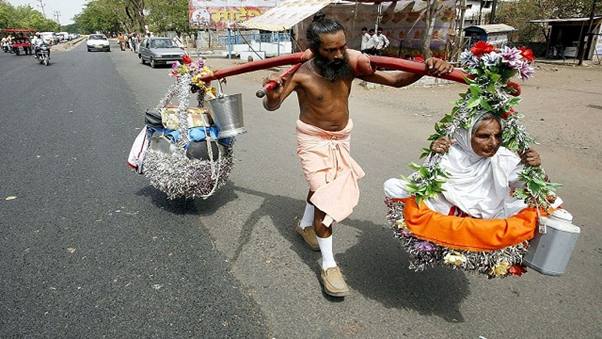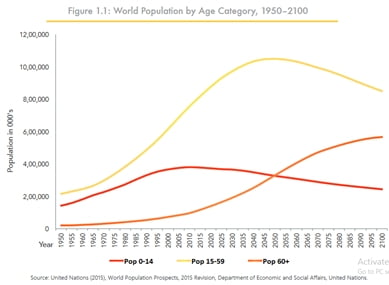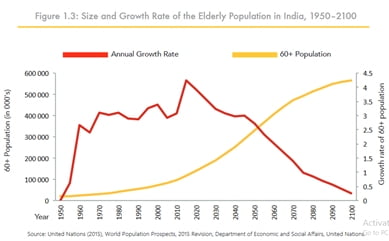Having glanced over the alluring and beguiling charm that Caregiving inveigled my vision with; through the progressive experiences I went through as enumerated in the previous two parts of my discourse, a new realisation and a forward looking attitude engulfed my being that said:
“God gave burdens; he also gave shoulders.” – Yiddish Proverb
And I ventured to go beyond the boundaries of the medico-patient-Caregiver closet. It drew my attention to explore further and delve into the spiritual aspects of Caregiving. It was then that I got determined to stay closer home and take a look at the legacy of Caregiving in India that merits an engaging study.
From the ancient times, India has been a land where family took the forefront in our cultural beliefs and practices.
Holistically, the moralistic Indian worldview of Dharma (righteousness) and Karma (action) brought in the belief of Seva (service) in our performance and fulfillment of filial and societal duties that illuminated the pathway to Moksha (liberation). Our religions and social mores are based on these cardinal principles of social behaviour, that called on the elder generations to take care of their progeny and the younger generations reciprocating the same in reverse. All our scriptures and our seers and sages have advocated selfless service personified in the oft-quoted sloka from the Bhagwat Gita:

The spirit of Caregiving is enshrined in the Bible and Quran too.
The Bible says:
“For I was hungry and you gave me food, I was thirsty and you gave me drink, I was a stranger and you welcomed me, I was naked and you clothed me, I was sick and you visited me, I was in prison and you came to me.” – Matthew 25:35-40
“Whoever brings blessing will be enriched, and one who waters will himself be watered.” – Proverbs 11:25
The Quran says:
“And whatever you spend, He will replace it; and He is the best of the providers.” – Quran 34:39
“Help one another in acts of piety and righteousness” – Quran 5:2
Role Models from the Epics
In India Caregiving has been worked into our cultural milieu and consciousness through effective role models.
Shravan Kumar appears as a vital subtext in the Ramayana, enjoying the highest recall in the ambit of role models in the discourse. Shravan, a young boy, carried his aged and blind parents in two baskets over his shoulder and captured the imagination and conscience of a society that coagulated normative behaviour towards elders in line with Shravan Kumar’s own sense of duty. Shravan Kumar is the ideal son, his duty to his parents, an unquestioned moral obligation that every son needs to imbibe and execute.
The other epic, Mahabharata, though less about ideal characters and their idealistic pursuits, even here we find Caregiving woven into the social fabric. As the war ends, a distraught Dhritarashtra and his wife Gandhari go away into the forest accompanied by Kunti and Vidur; and it is Kunti who looks after the ageing couple for a long time. Never once does she leave their side. She stays by them, childless as they are, as their companion, devoted in her Caregiving efforts. For the mortals, the lessons are unmistakable: that Caregiving is part of filial duty; it is a moral obligation, a compulsion that necessitates acceptance.
Caregiving is thus worked into the mainstream Indian cultural tradition. In India, the family continues to be the focal point of social and group dynamics. The joint family system may have all but died today due to practical considerations, yet in spirit it continues to dominate the socio-cultural discourse. Elderly couples are supported by their families in both rural and urban India.
In India large families spell social security, especially for the elderly members. Parents provide care to their children in their young years and the children reciprocated for their elderly parents. A person’s Dharma has always been to look after his or her parents in their twilight years.

A 21st Century Shravan Kumar
The curious case of Kailash Giri Brahamchari, truly a 21st century Shravan Kumar, is the story of a sterner stuff to admire and talk of. Aged over 36 with little means, from a Madhya Pradesh village called Wargi, is presently carrying his 80-year-old blind mother, Kirti Devi, on shoulders for pilgrimage across India, in return to the Caregiving his mother accorded him when he was himself paralysed in an accidental fall when young. He walks four to five kilometers every day, carrying his mother and taking rest at some roadside temples. He cooks food from whatever people offer him in his journey, and serves it to his blind mother first. His determined journey of 20 years has seen his mother visit the holy places of Rameshwar, Jagannath Puri, Tirupathi, Ganga Sagar, Basukinath Dham, Tarapith, Badrinath, Kedarnath, Hrishikesh, Haridwar, Kaashi, Ayodhya, Chirtrakut, Allahabad, Narmada, Pushkar, and Gujarat; where he was framed on camera by the local media. He said he needs to complete his journey by visiting Dwarka and Ujjain, before he returns to his village.
Kailash Giri’s story is not for the faint hearted. It has brought forth the concept of Dharma, Karma and Seva in unison as enshrined in our scriptures that brings him closer to the ideal concept of man, propounded and practiced by many wise men of this divine country. May the likes of this ‘Modern Shravan Kumar’, a true role model, grow and proliferate the holy land of Bharata! Kailash Giri’s epic story must reach every Indian’s ear.

The changing dynamics
According to the United Nations Populations Fund (UNFPA), India Ageing Report, 2017; the demographic profile of India is now witnessing changes. The ageing population which was just 7.5% in 2001 has increased to 8.6% by 2011. It is predicted the population of senior citizens in India could be around 19% of total population by 2050. This will mean that caring for the elderly and all aspects of geriatric services would come under greater focus and attention in the coming years. It has significant implications to the concept of Caregiving and Carereceiving. The self-explanatory demographic Figures1.1-1.4, placed below, can be interpreted towards the future planning needs of the Caregiving aspects in India, especially in reference to the senior citizens.



In accordance with a Ministry of External Affairs Report (Deccan Herald, January 22, 2020), there are 31 million Non-Resident Indians (NRIs and PIOs) residing outside India. Every one of these NRIs, with elderly parents back home in India, is aware of that familiar feeling of constant worry lurking at the back of their minds, added to a lingering sense of guilt for having left them behind.
As families shrink, support systems vanish and children get busy with careers in faraway lands, parents are left with not just large houses that pose a security threat, but also hostile housing societies and neighbours. When thousands of Indians emigrate each year for higher education, lucrative jobs or a better lifestyle, they leave behind, either knowingly or unknowingly, their biggest treasure: their elderly parents with broad smiles and cheerful exteriors; who hide behind their moist eyes untold stories of loneliness, anxiety, fear and uncertainty that they would rather not tell their children several hours of travel time away.
As a consequence, there has been a commercialised mushrooming of Old Age Homes, Hospices, Assisted Living Accommodations, institutionalised Caregiving Organisations, Online Collaborative Eco-Systems and Online Funeral Services Providers.
Corona Pandemic and Caregiving
When it comes to COVID-19, the disease caused by the new coronavirus, older people are especially vulnerable to severe illness. Research shows that people aged 60 years and above, especially those with pre-existing medical conditions like heart disease, lung disease, diabetes or cancer are more likely to have severe, even deadly, coronavirus infection than other age groups. The younger professionals and middle-aged people, too, are bound to be caught between ageing parents and a career to keep in these trying times. The shrinking of the economies and fear of ‘being benched out’ adds to the uncertainty. The COVID-19 has already stretched the medico-healthcare systems to its seams, with other diseases receding to the background. There is a visible shift of priorities, of values and beliefs. The shape of things to come is hazy and uncertain with the Caregivers themselves falling within the vulnerable groups. Their protection too will form a part of the emerging health-care systems. While the corona pandemic is not to leave us anytime soon, and may become another new virus to live with like HIV, a Caregiver of tomorrow will have to brace up to a new reality that hangs over him like the proverbial Damocles’ sword.
As I round off my series of articles on the aspects of Caregiving, enough scope for institutionalized research and prospective planning exists and the various stakeholders like the international agencies of UNO/ WHO, governments, NGOs, funding agencies, social entrepreneurs, social researchers, medical community, healthcare workers, religio-thought and community leaders etc must come together and rise in unison to meet the developing situation in a single voice laced with share, care, support and compassion for the Carereceivers; not forgetting that the Caregivers too need to be heard.
In the end, I would like to assert:
To the Caregiver and to the Carereceiver alike:
“Love cures people – both the ones who give it and the ones who receive it.” – Karl Menninger, 1893-1990
To the Ageing and the Young alike:
“Give me a young man in whom there is something of the old, and an old man in whom there is something of the young. Guided so, a man may grow old in body but never in mind.” – Cicero, 106-43 BCE
Also Read: Caregiving: Remembrances And Reflections On International Day Of Families
Also Read: Caregiving: Recollections From Some Exalted Lives And Redefining Caregiving
(This is the third and final article of a series on Caregiving and Carereceiving. The author dedicates it to his wife Rajalaxmi and son Arnav, equal partners of his Caregiving journey)


